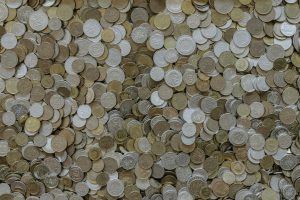Forex, also known as foreign exchange, is the largest financial market in the world. It involves the buying and selling of currencies from different countries. As a forex trader, it is essential to understand how to read forex graphs to make informed trading decisions.
A forex graph is a visual representation of the price changes of currency pairs over a specific period. It is created by plotting the exchange rate of one currency against another on a chart. The x-axis represents time, while the y-axis represents the exchange rate.
Understanding the different elements of a forex graph is crucial to grasp the market’s movement and identify trading opportunities.
Timeframe
Forex graphs come in different timeframes, ranging from one minute to one month. The timeframe selected determines the level of detail shown on the chart. For instance, a one-minute chart shows the price movements of a currency pair every minute, while a one-month chart shows the price movements of a currency pair over a month.
Traders use different timeframes depending on their trading strategies. Short-term traders may prefer shorter timeframes to capture quick profits, while long-term traders may prefer longer timeframes to identify long-term trends.
Currency Pair
A forex graph shows the exchange rate of one currency against another. The currency pair displayed on the chart depends on the trader’s selection. For instance, if a trader wants to trade the EUR/USD pair, the chart will show the exchange rate of the euro against the U.S. dollar.
Price Scale
The price scale on a forex graph represents the exchange rate of the currency pair. It is usually located on the right-hand side of the chart, and the values vary depending on the currency pair and the timeframe. The price scale may also include indicators such as moving averages, which help traders identify trends.
Candlesticks or Bars
Forex graphs can be displayed using either candlesticks or bars. Candlesticks are the most popular form of charting in forex trading. Each candlestick or bar represents the price movement of the currency pair over a specific period, depending on the selected timeframe. The body of the candlestick represents the opening and closing price, while the wicks or shadows represent the high and low prices during the period.
Candlestick patterns provide valuable insights into market sentiment and help traders identify potential entry and exit points. For instance, a bullish candlestick pattern may indicate an uptrend, while a bearish candlestick pattern may indicate a downtrend.
Indicators
Forex traders use indicators to analyze the market and identify trading opportunities. Indicators are mathematical calculations that use historical price data to provide insights into market trends, momentum, and volatility.
Some popular indicators used in forex trading include moving averages, Relative Strength Index (RSI), and Bollinger Bands. Indicators are usually displayed on the price scale or below the chart.
Conclusion
Reading a forex graph is an essential skill for any forex trader. It helps to identify market trends, entry and exit points, and potential trading opportunities. Understanding the different elements of a forex graph, such as the timeframe, currency pair, price scale, candlesticks or bars, and indicators, is crucial to making informed trading decisions.
Traders should also keep up with the latest news and events that may affect the currency markets. By combining technical analysis with fundamental analysis, traders can gain a comprehensive understanding of the forex market and make profitable trades.






